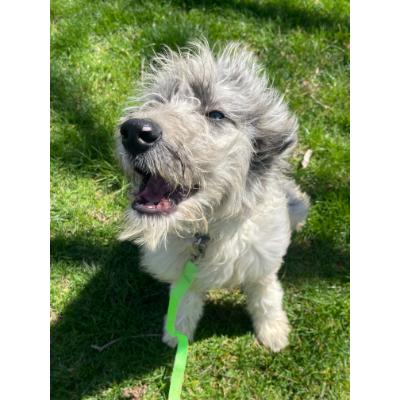
Bringing a new puppy into your home is an exciting and joyful experience, but it also comes with its share of challenges. Among the most common issues new puppy owners face are chewing, biting, and jumping up. These behaviors, while natural, can be frustrating and even destructive if not managed properly. Here’s a guide to understanding and addressing these common puppy problems.
Chewing
Why Puppies Chew: Puppies chew for various reasons, including teething, exploring their environment, and alleviating boredom or anxiety. Chewing is a natural behavior that helps puppies learn about the world and provides relief for sore gums.
How to Manage Chewing:
- Provide Appropriate Chew Toys: Make sure your puppy has a variety of safe and durable chew toys. Rotate them regularly to keep your puppy interested.
- Puppy-Proof Your Home: Keep valuable or dangerous items out of reach. Use baby gates to limit access to areas with items you don’t want chewed.
- Use Bitter Sprays: Apply bitter-tasting sprays to furniture or items your puppy tends to chew. This can discourage the behavior.
- Positive Reinforcement: Praise and reward your puppy when they chew on appropriate toys. This reinforces good behavior.
- Supervision and Redirection: Keep an eye on your puppy and redirect their attention to chew toys if they start chewing on something inappropriate.
Biting
Why Puppies Bite: Biting is a normal part of puppy play and development. Puppies use their mouths to explore and interact with their littermates, and this behavior often continues with humans.
How to Manage Biting:
- Teach Bite Inhibition: When your puppy bites too hard during play, let out a high-pitched yelp to mimic a hurt littermate and stop playing for a few moments. This teaches them that biting hard ends the fun.
- Redirect to Toys: Offer chew toys or bones when your puppy starts to bite. Encourage them to chew on these instead of your hands or feet.
- Avoid Rough Play: Avoid games that encourage biting, like tug-of-war or wrestling, until your puppy understands gentle play.
- Consistent Training: Use commands like “no bite” or “gentle” consistently to teach your puppy the boundaries.
- Socialization: Regular playdates with other vaccinated puppies can help your puppy learn appropriate play behavior from their peers.
Jumping Up
Why Puppies Jump Up: Puppies often jump up to greet people and seek attention. While it may be cute when they’re small, it can become problematic as they grow.
How to Manage Jumping Up:
- Ignore and Turn Away: When your puppy jumps up, turn your back and ignore them. Don’t give them any attention until all four paws are on the ground.
- Teach an Alternate Behavior: Train your puppy to sit when they greet people. Reward them with treats and praise when they sit calmly instead of jumping.
- Consistency is Key: Make sure everyone in the household follows the same rules. Mixed signals can confuse your puppy and hinder training progress.
- Reward Calm Behavior: Give attention and treats when your puppy is calm and has all four paws on the ground. This reinforces the desired behavior.
- Practice with Guests: Arrange for friends or family members to help with training. Have them follow the same steps of ignoring jumping and rewarding calm behavior.
Patience and Persistence
Dealing with common puppy problems requires patience, consistency, and positive reinforcement. Remember, your puppy is still learning and will make mistakes along the way. With time and proper training, your puppy will grow into a well-behaved and cherished member of your family.
By addressing chewing, biting, and jumping up early on, you’re setting the foundation for a happy, healthy, and well-mannered dog. Enjoy the journey of raising your puppy, and don’t hesitate to seek professional help if needed. Happy training!
For more tips and advice on puppy care and training, be sure to check out our other blog posts and follow us on Instagram for daily inspiration and updates!
